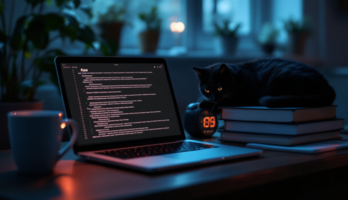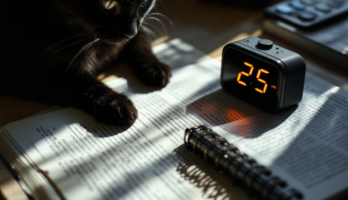A.J. Bard, L.R. Faulkner - Electrochemical methods - Fundamentals and Applications (794273), страница 70
Текст из файла (страница 70)
This equation cannot describe the experiment reliably in the early stage, but it becomes a better descriptor at later times, as the period of growth becomes a smaller portion of the whole experiment.In practice, an SMDE is rarely operated in this dc polarographic mode, precisely because of the unfavorable current-time profile during the life of each drop and the poorcontrol of mass transfer in the formative stage, when currents are high. Instead, bettermeasurement conditions are created by manipulating the potential carefully during the lifeof each drop.
During the period when the drop is born and brought to maturity, the potential is controlled at a value where there is no significant electroactivity. After the drop becomes static the potential is changed to a value where a current measurement can be7.1 Behavior at Polarographic Electrodes267taken.
If this change involves stepping the potential to a value in the mass-transfer-controlled region, the experiment fulfills all of the conditions assumed in Section 5.2.2 without being compromised by the growth of the drop. If the current is then sampled at time r,measured with respect to the leading edge of the potential step (rather than the birth of thedrop), then the sampled current is given rigorously by (7.1.8).
This experiment is knownas normal pulse polarography and is described in more detail in Section 7.3.2. A normalpulse polar ogram is recorded by imposing a slightly larger potential step on each successive drop and making a plot of the sampled current vs. step potential, essentially exactlyas outlined in Figure 5.1.3.Usually the sampling time т is short enough that the diffusion layer thickness remainssmall compared to % so that the second (spherical) term of (7.1.8) is negligible.
Thus, thesampled limiting-current, based on linear diffusion, is given by the Cottrell equation,which is the SMDE's analogue to the Ilkovic equation. Because the current declines withincreasing sampling time, it is advantageous to keep that time to a minimum. A typicalpulse width (and sampling time) is 50 ms.Normal pulse polarography can also be carried out with a DME as discussed in Section 7.3.2.7.1.3Polarographic AnalysisThe DME and SMDE share many advantages for practical electroanalysis (3, 6, 18, 19).The dropping action is very reproducible, and the surface is continuously renewed.
Thesefactors make high-precision measurements possible (5), and the latter carries the additional advantage that the electrode is not permanently modified by material that depositsin or on the electrode (as does occur by adsorption of species from solution or in thecourse of electrodeposition of metals). The current-time curves at the DME, which featureminimal rates of current change as the maximum current is approached (and also a maximum current identified with the end of drop life), are well adapted to sampled-currentvoltammetry. The favorable time profile is sacrificed at the SMDE in favor of shortersampling times, shorter drop times, faster runs, and higher currents.
With either electrode, sampled-current voltammetry is convenient for multicomponent analysis, becausecurrent plateaus are obtained in the mass-transfer-limited region of each wave; hence flat(or at least linear) baselines apply to each of several successive waves (Sections 5.6 and7.1.5). The repeated dropping and stirring action make it possible, in effect, to carry out asuccession of step experiments with a constant potential or a slowly varying ramp appliedto the electrode.
With a DME, sampling can be carried out just by observing the locus ofmaximum currents on the current-potential curve, and this is the basis for dc polarographyin the classic form. With the SMDE, sampling must be done electronically, but it is easyto accomplish.Another important advantage of the DME or SMDE is the very high overpotential forhydrogen discharge on mercury surfaces. In many media, this process is the cathodicbackground reaction; thus the high overpotential means that the background limit ispushed to more negative potentials, and it becomes possible to observe electrode reactionsthat occur at rather extreme potentials.
An example is the reduction of the sodium ion tosodium amalgam in basic aqueous media, which is observable as a clean wave well beforethe background limit is reached. The exothermicity and the vigor of sodium's reaction+with water testifies to the much smaller energy change involved in the reduction of H268Chapter 7. Polarography and Pulse Voltammetrycompared with the reduction of Na + . It is the sluggish kinetics of the former that makespossible observations of higher-energy processes, such as the latter.Actually, this particular case is aided by another nice feature of the DME or SMDE,namely the ability to form amalgams.
Since sodium amalgam is spontaneously formed:Na + Hg -> Na(Hg)AG° < 0(7.1.10)the amalgam lies at a lower position on the free energy scale than metallic sodium. Thefree energy for Na + reduction to Na(Hg) is therefore less than for reduction to the metal,and the standard potential is correspondingly more positive.
This is a general feature ofelectrode processes that involve reductions to amalgams, and it, like the high hydrogenoverpotential, contributes to a widening of the range of processes that can be studied atthe DME and SMDE.The chief disadvantage of polarographic methods lies in the inability of mercuryelectrodes to operate at potentials much more positive than 0.0 V vs. SCE. The anodiclimit, which arises from the oxidation of mercury, is always near that potential, althoughit depends somewhat on the medium.Quantitative polarographic analysis is based on the linear linkage between the diffusion current and bulk concentration of the electroactive species.
In general, the most precise measurements of concentration are carried out by constructing a calibration curvewith a set of standard solutions. In routine work, ± 1 % precision can be obtained (3,6, 18,19); however, Lingane (5) showed that ±0.1% is possible with careful precautions. Hiswork demonstrated that most sources of imprecision involve temperature effects of somesort. Chief among them is the temperature dependence of mass transport itself, for the diffusion coefficient increases by 1-2% per degree.
Even at the 1 % precision level, thermostating of the cell is required. For more details on actual measurements, the literatureshould be consulted (3, 16, 18, 19).Standard addition and internal standard methods are also used in concentration measurements. They are implemented in the obvious ways and usually are capable of precision of a few percent.Unique to dc polarographic analysis, and to the DME, is the "absolute" methodfor evaluating concentrations, which was advocated by Lingane (20). A rearrangementof the Ilkovic equation for maximum currents, placing all the experimental variables(/d, Wx> w» and CQ) on one side, givesThis diffusion current constant, (/)max, is independent of the specific values of m, rmax,and CQ used in the measurement.
Since it depends only on n and D o , it is a constant of theelectroactive substance and the medium in much the same way that molar absorptivity, s,is a constant of the system for optical measurements. Given (/) max for the system at hand,one can evaluate CQ simply by measuring /</, £max, and m. No standards are needed. Themethod is not wholly accurate, because (7.1.7) is itself an approximation. Many workershave reported diffusion current constants and large tabulations exist (21-25).Because the DME is now in declining use, diffusion current constants are rarely reported in new literature; however the data in older literature4 remain useful in characteriz4Since the older work was often based on average limiting currents, many reported diffusion current constantsare defined from the version of the Ilkovic equation for average currents, which gives:Thus I = (6/l)(I)n7.1 Behavior at Polarographic Electrodes269ing electrode processes, particularly as indicators of я-values or diffusion coefficients.
Ingeneral, one-electron, two-electron, and three-electron reactions have constants in theranges of 1.5-2.5, 3.CM-.5, and 4.5-7.0, respectively, whenever media with water-like viscosities (~1 cP) are employed. This criterion can be extended to other media viaWalden s Rule (14), which notes that for most substances the diffusion coefficients in twomedia, 1 and 2, are related to the viscosities 171 and щ by(7.1.12)Thus,(7.1-13)All of this rests upon the fact that diffusion coefficients for most ions and small molecules have similar values in a single medium. Exceptions include H + and OH~ in aqueous media, oxygen generally, polymers, and large biomolecules.
Even though (/)max o r Ican be used conveniently to estimate D values, discretion is needed because of the limitations in the Ilkovic equation.In its basic "dc" mode, polarographic analysis is carried out most precisely in therange from 0.1 to 10 mM. Comments above about precision generally apply to this region. Above 10 mM, electrode processes tend to cause such large alterations in solutioncomposition near the electrode that density gradients arise, convection becomes a problem, and currents may be erratic. Also, such concentrated samples can produce largecurrents, which can be accompanied by large iRu, leading to inaccurate potentials andbroadened waves.
At the other end of the working range, useful measurements cansometimes be carried out near 10~5 M; however charging current (Section 7.1.5) becomes a severe interference at the DME and effectively sets the detection limit for dcpolarography, whether the sampling is done visually or electronically. The SMDE isusually employed with the more sophisticated polarographic methods discussed in Section 7.3, which are preferred to dc polarography because they provide better sensitivities and background suppression.7.1.4Effect of Mercury Column Height at a DMEIn work with a dropping mercury electrode, the height of the mercury column above thecapillary tip governs the pressure driving mercury through the DME, thus it is a key determinant of m (13, 14).
















